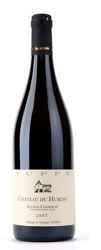

Helmut Dönnhoff - Dönnhoff Schlossbockelheimer Spätlese 8.5% ABV
For anyone sensitive to the alcohol levels in their favourite beverage (and I suppose now and again it happens to even the most avid vinophile) there are some guidelines you can follow that may help avoid scr21utinising every bottle on the shelf or resorting to the usually unpleasant low alcohol wines available.
A much more pleasurable tack is to drink wines that are naturally lower in alcohol. What makes a wine naturally lower in alcohol? Essentially it boils down to the simple reaction that yeast + sugar = alcohol + CO2. Yeast will naturally multiply and convert all of the sugar to alcohol. High sugar in unfermented grapes therefore leads to high alcohol in the wine unless winemakers intervene and stop the fermentation leaving some residual sugar in the wine and keeping the resulting alcohol level lower.
Cooler climates with less sunshine and thereby less sugar in the grapes will naturally produce slightly lower alcohol wines. Think California vs. Bordeaux. Bordeaux wines are usually around 12-13% (all very sociable) whereas Californians can easily be over 14%. As an added bonus, Bordeaux wines are very food friendly and will show off your roast beef to perfection.
Sparkling wines and champagne also tend to be lower in alcohol. Because these wines go through a secondary fermentation to produce the bubbles, the wines start with very high acidity and low sugar in order to keep the finished wine fresh and not flabby.

Germany is a marvellous source of wines that have residual sugar and hence lower alcohol. Many of these fabulous wines have alcohol as low as 8 or 9% which is very guilt free drinking indeed. To my mind though, the lower alcohol is merely an extra benefit. The wines are absolutely delicious – particularly the Spätleses such as
Dönnhoff Schlossbockelheimer Spätlese at only 8.5% ABV and the
Forster Jesuitengarten Spätlese at only 8% (tricky pronunciation is no reason not to try them!). Wines with this much depth, complexity and energy are rare - and shamefully under-appreciated. Riesling is also incredibly food friendly. These gorgeously flavoursome wines go brilliantly with rich seafood such as salmon, or roast chicken, pork with apples, Thai food or of course as an aperitif.

Reds with low alcohol are thinner on the ground. As mentioned, Bordeaux is a good place to start and the Loire affords a few interesting options. For example
Château du Hureau Red is a fairly modest 12.5% ABV and a lovely, light, fruity Cabernet Franc – perfect with a lunchtime platter of cold meats. Of course if all else fails you could put the cork back in the bottle and finish it tomorrow…
